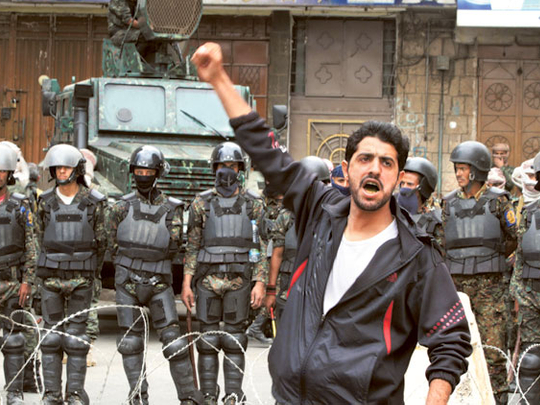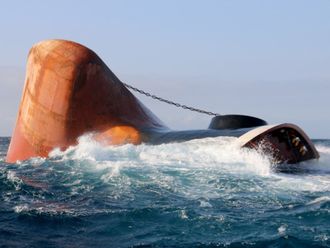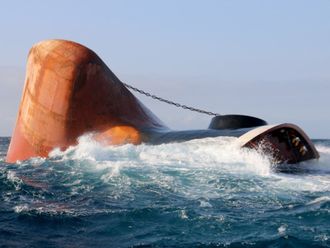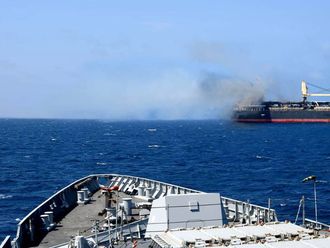
SANA’A, Yemen: Iran is taking advantage of the confusion surrounding Yemen’s transition of government to gain a new foothold in the country, Yemeni and Western officials say, as Tehran seeks military allies operating near one of the world’s strategic waterways for oil shipments. Iran is training militants who are aligned with a separatist movement in southern Yemen, while Iran’s Lebanese proxy, Hezbollah, is providing some funding and media training to the group, people familiar with the situation say. Iran has also directed arms, including heat-seeking missiles, toward these militants, Yemeni and Western officials say, citing intelligence reports.
The outreach comes as Tehran has sought to bolster its influence in a region reshaped by two years of uprisings. A tie to Yemeni militants could provide Iran with a strategic pressure point — one akin to its alliance with Hezbollah in Lebanon, just across the border from Israel. An expanded roster of Yemen-based allies would give Tehran a lever against the US, which relies on Yemen’s government as a hedge against Iran and a partner against Al Qaida-linked militants in Yemen. Iran could also turn to clients in Yemen as Syria’s war poses an existential threat to one of Tehran’s biggest regional allies, the Damascus government of President Bashar Al Assad.
“If the south of Yemen were to break away and become an ally of the Iranians, it would be a major strategic gain for Tehran,” said Bruce Riedel, a senior fellow and director of the Brookings’ Intelligence Project. “It might more than compensate for the loss of Syria if Al Assad’s government falls.”
Iran didn’t respond to requests to comment to its United Nations mission. Hassan Rouhani’s election as Iran’s president isn’t expected to affect Iran’s policies towards proxy groups such as Hezbollah, as such relationships are overseen by elite units of Iran’s Republican Guard, under the control of Supreme Leader Ayatollah Ali Khamenei.
Tehran’s latest overtures, according to the Western and Yemeni officials, are directed at members of Hirak — a political movement that seeks to divide Yemen along the southern and northern states that existed before they unified in 1990. While Hirak is made up primarily of Sunnis, it finds common cause with the Shiite Tehran in opposing Yemen’s government. Iran has worked to militarise elements within Hirak for nearly two years, these officials say.
Hirak’s power base in southern Yemen lies alongside part of Bab Al Mandab, a strait travelled by many giant oil tankers bound for the US and Europe. Bab Al Mandab — Arabic for Gate of Grief — is so named for the treacherous journey through waters just 18 miles wide at points.
Security is a concern at Bab Al Mandab, which stands, along with the Suez Canal and the Strait of Hormuz, as one of the world’s major oil-supply choke points. Yemen’s national security forces and its coast guard have been strained since the country’s revolution took root in 2011.
Some Western officials worry that Iran could use military allies along Bab Al Mandab to disrupt shipping there, as it has attempted to do along its own coast on the Strait of Hormuz.
“If the Iranians are able to control Bab Al Mandab and the Strait of Hormuz, they’d be able to have a chokehold on the global economy,” a Western diplomat in Sana’a said.
Iran’s moves in Yemen would represent a new challenge to the US, which in recent years has multiplied its financial support for Yemen’s impoverished government in Sana’a. Last year, the US provided $350 million (Dh1.28 billion) to Sana’a, according to the Congressional Research Service, up from roughly $26 million in 2008.
Tensions between the US and Iran have increased as Washington has boosted sanctions over Iran’s nuclear programme. Iran threatened to cut shipping in the Strait of Hormuz last year as the European Union and US proposed sanctions targeting Iran’s oil industry and central bank.
Iran’s recent threats to shipping have appeared to be little more than sabre-rattling. But Tehran has used its navy as an instrument of intimidation in the Strait of Hormuz for two decades. At Bab Al Mandab, even rocket-propelled grenades, notorious for their poor aim, could heighten fear that could drive some oil tankers away, said Riedel and the Western official.
In January, Yemeni security forces seized a boat packed with arms, explosives and anti-aircraft missiles that local security officials say included Chinese heat-seeking missiles.
A Yemeni investigation concluded that “these weapons were loaded onto [a] vessel in Iran and were intended for armed insurgents”, the US State Department said in February. The arms are the most sophisticated to be intercepted en route to Yemen.
Citing intelligence reports, the Yemeni and Western officials said they suspect the arms were bound for Hirak as well as the Al Houthis, a militant movement in Yemen’s north that has long-standing ties to Iran.
Yemeni officials say they have recently seen more sophisticated weapons reach the Al Houthis, such as rocket-propelled grenades. But the January attempt to arm the Al Houthis and Hirak, they say, would have introduced surface-to-air missiles to down aircraft flying above the Arabian Peninsula and allowed the groups to create powerful homemade bombs, both new capabilities.
“Yes, most Yemenis are armed, but with Kalashnikovs,” said Ali Mohsin Al Ahmar, a senior defence adviser to Yemen’s president. “These sophisticated weapons are only in the hands of the Al Houthis and Hirak.”
Officials for both groups, while not addressing the alleged arms shipment, said some elements of their groups had chosen to arm themselves out of frustration with Sana’a.
The Al Houthis and Hirak have sent hundreds of fighters to Iran for training, Al Ahmar added.
Hirak officials admit their movement is fracturing as its leaders focus on gaining independence through referendums while some armed factions turn to Iran to arm themselves for the struggle. Militants seeking training in Iran are acting on their own, these Hirak leaders say.
“Some Hiraki youth have gone to Iran for training. They got tired of our promises and sought the funds and training to fight the northern occupation,” said Qasim Askar, Hirak’s secretary-general. “And senior leaders [from Hirak] went to the Al Houthis for weapons about a year ago, and we warned them to stop.”












